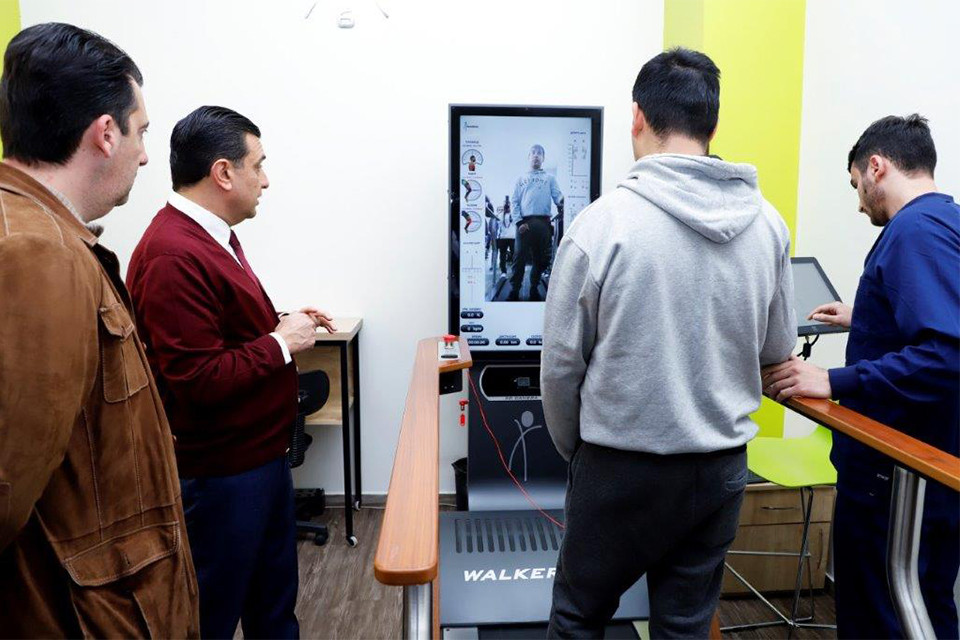Viva-MTS has been actively applying new technological solutions to make exploitation of mobile base stations more efficient.
The solar energy-based green tech is widely applied both for modernization of mobile communication infrastructures and social projects.
Application of solar energy is particularly important in remote locations that lack centralized electric energy supplies, and are not easy to reach by road; besides, delivering diesel fuel to a base station in such locations is a hard task even when track machines are at hand.
Viva-MTS’ base stations in mountainous areas provide mobile communication and Internet to remote settlements, including the borderland communities, strategical facilities, as well as transit roads.
Viva-MTS owns 13 base stations, where the energy is supplied through photovoltaic solar system. In locations, where the centralized supplies of electric power is not available, Viva-MTS mostly applies hybrid method for ensuring electric power. To mention, only three of the base stations operated by solar energy are connected to the centralized electric power supply system – photovoltaic solar system and chargable batteries. The solar system of electric power supply lets ensure uninterrupted communication, minimize emissions, and decrease technical maintenance expenses.
The total operational savings made possible through application of solar energy in 2021 have been equal to the sum that would be needed to 140,000 kilowatt/hour energy. The solar stations currently operating in the base stations annually produce some 207,168 kilowatt energy per hour. Besides, the reliance on solar energy helps minimize the volume of diesel delivered to the base stations, which requires a certain amount of resources. This way, Viva-MTS saves about 36,870 liters of diesel fuel on a yearly basis.
A solar panel installed to provide power supply to a mobile communication base station occupies some 100 sq. meters in average.
The power supply in base stations equipped with combined systems is performed using solar energy in the daytime; in night hours, charged batteries and in case of necessity, diesel generators supply the power. In the base stations, which are connected with the centralized system of power supply and which are equipped with solar panels, an electric power exchange is set up through two-way metering device: the excessive power produced in the daytime is transferred to electric networks and is returned to the base station in the night hours.
“The world cannot reject electric energy altogether, at least for now. The base stations, which provide for voice and Internet communication, are run on electric power, as well. Yet, not all sources of energy are restorable and safe. The carbon dioxide emissions are hazardous for people and the well-being of the nature. Besides, energy has production costs. An alternative to it is the solar energy: first, it is renewable, and second, it produces no emission, and is almost free. Viva-MTS, as a tech company, pays special attention to using hybrid stations specifically in locations, where communication is needed, yet a centralized power supply is unavailable. Solar energy saves nature and money. Introduction of solar technologies is a win-win option for everyone”, Viva-MTS General Director Armen Avetisian said.
In Armenia, like elsewhere in the world, infrastructures of communication and innovative technological solutions facilitate development of other types of infrastructures. A prime example of it is the base station constructed on the territory of Caucasus Wildlife Refuge with height of 2300 meters above sea level. This base station is also equipped with a solar photovoltaic station, the solar panels of which were installed by the FPDC. The main purpose of the base station in this location is to provide rangers with means of communication. The Khosrov Reserve, as well as the adjacent territories, are fundamental for the biodiversity of the South Caucasus and the rare wildlife of the region.
3.5/4G connection helps to monitor the area by means of thermal video recording devices operated from the refuge. The shots made by the camera capture numerous Bezoar goats, as well as wolves, bears, lynxes, and even Caucasus leopards; experts say, only 8 to 13 species of the latter have been seen within the last few years period in the territory of Armenia. The staff of the foundation responds shortly in case a rare species appears before the camera. Further yet, the cameras help detect and respond to poaching and transgression cases, as well. Cameras are great support at preventing wildfires. Heat sensors incorporated into the cameras inform the staff on the possibility of a wildfire, which lets respond to a situation shortly and stop the fires from spreading. The use of the cameras are also fundamental for rangers in hard-to-reach areas, where monitoring using human resources is a complication task.
Ecotourism is yet another direction developing in the refuge. The eco-center is both a stay-in option for tourists, as well as a home for researchers working in the territory.

17:29 | 24.09.25 | Articles
Jacopo Losso on Cross-Border Investments and Why Armenia Attracts Angels














